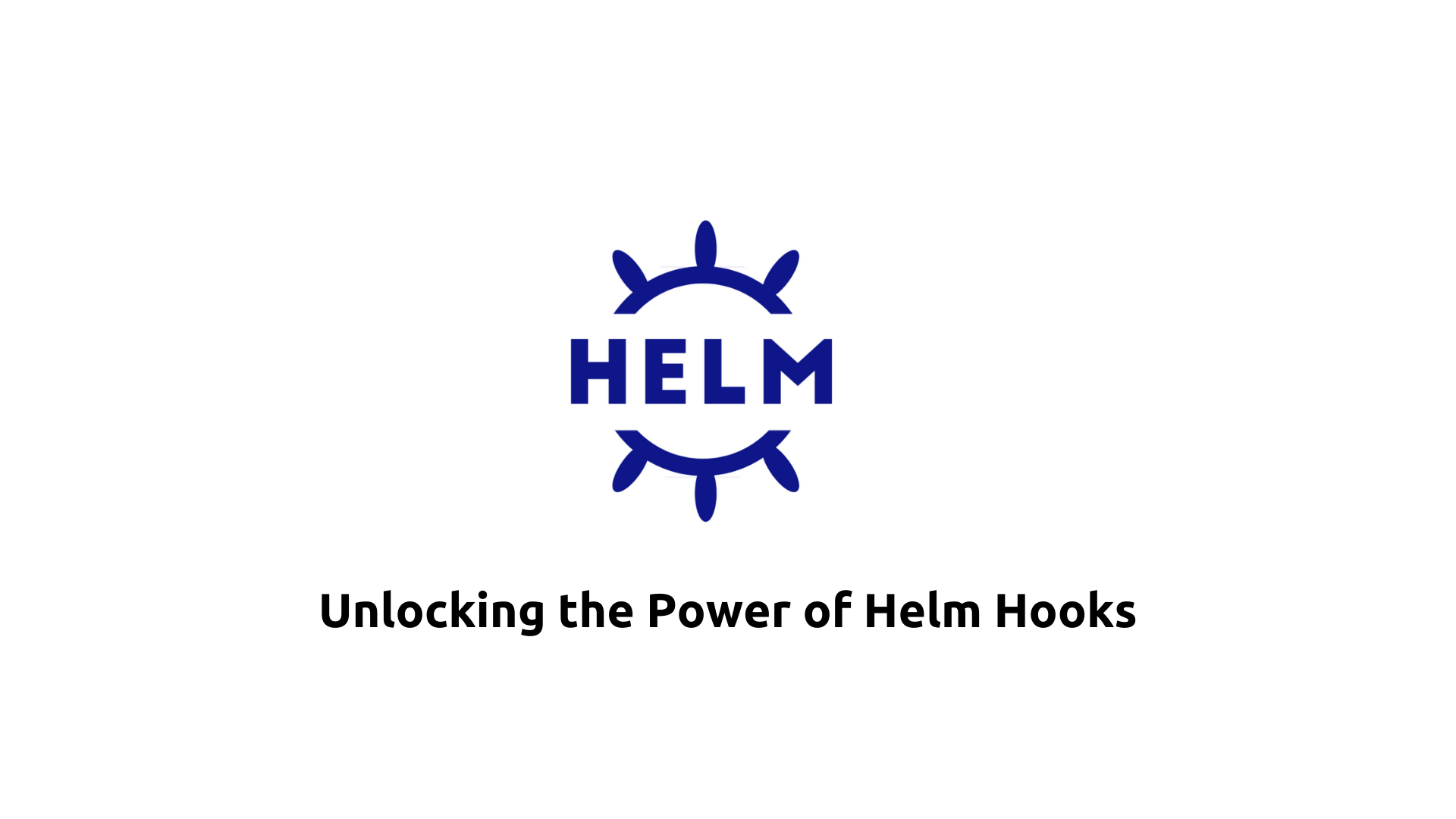Unlocking the Power of Helm Hooks
 Saurabh Adhau
Saurabh Adhau
Introduction
In the dynamic world of Kubernetes deployment management, Helm has emerged as a powerful tool for simplifying the packaging and deployment of applications. Helm charts provide a convenient way to define, install, and manage applications on Kubernetes clusters. However, as deployments grow in complexity, the need for more granular control and customization becomes apparent. This is where Helm hooks come into play, offering a flexible mechanism for executing commands at various stages of the Helm lifecycle.
Understanding Helm Hooks
Helm hooks are special resources within a Helm chart that allow you to define actions to be performed during specific lifecycle events of a release. These events include pre-installation, post-installation, pre-deletion, and post-deletion. By leveraging hooks, you can execute custom logic or interact with external systems to tailor the deployment process to your specific requirements.
Benefits of Helm Hooks
1. Enhanced Flexibility
Helm hooks provide a level of flexibility that is essential for managing complex deployments. By enabling the execution of custom scripts or commands at key points in the deployment lifecycle, hooks empower users to integrate with external systems, perform validation checks, or execute additional configurations as needed.
2. Simplified Integration
Hooks facilitate seamless integration with external tools and services by allowing you to trigger actions based on deployment events. Whether it's sending notifications to Slack channels, updating external databases, or invoking custom APIs, Helm hooks streamline the integration process and enable tighter orchestration of your deployment workflow.
3. Improved Reliability
With Helm hooks, you can ensure that necessary preparations are made before deploying or deleting resources. This includes tasks such as creating prerequisite resources, performing data migrations, or running health checks. By incorporating these actions directly into the Helm chart, you can enhance the reliability of your deployments and reduce the risk of errors.
4. Lifecycle Management
Hooks align with the lifecycle of Helm releases, offering precise control over when actions are executed. Whether you need to initialize resources before installation, clean up resources after deletion, or perform validation checks before deployment, hooks enable you to orchestrate tasks at the appropriate stages of the deployment lifecycle.
5. Reusability and Modularity
Helm hooks promote reusability and modularity by allowing you to encapsulate common deployment tasks as reusable components within your charts. This modular approach simplifies chart maintenance, promotes consistency across deployments, and facilitates collaboration by providing a standardized way to extend Helm functionality.
Best Practices for Using Helm Hooks
While Helm hooks offer significant advantages, it's important to follow best practices to ensure efficient and reliable deployment management:
Keep Hooks Idempotent: Ensure that hooks are idempotent, meaning they can be safely run multiple times without causing unintended side effects. This helps maintain consistency and reliability, especially in scenarios where hooks may need to be re-executed due to rollbacks or retries.
Test Thoroughly: Thoroughly test hooks to validate their behavior under various conditions, including successful deployments, failed deployments, and rollbacks. This helps uncover potential issues and ensures that hooks behave as expected across different environments.
Document Hook Usage: Document the purpose and behavior of each hook within your Helm charts to provide clarity for users and facilitate troubleshooting. Include relevant information such as dependencies, expected outcomes, and any prerequisites or constraints.
Consider Security Implications: Be mindful of security implications when executing custom scripts or commands within hooks. Avoid hardcoding sensitive information and follow best practices for handling secrets and credentials within your deployment environment.
Monitor Execution: Monitor the execution of hooks during deployments to identify any issues or performance bottlenecks. Monitoring tools and logging mechanisms can provide valuable insights into the behavior of hooks and help diagnose potential issues in real time.
Conclusion
Helm hooks offer a powerful mechanism for extending and customizing the deployment process within Kubernetes environments. By leveraging hooks, users can enhance flexibility, reliability, and modularity while streamlining integration with external systems and services. By following best practices and incorporating hooks effectively into Helm charts, organizations can optimize their Kubernetes deployment workflows and unlock new levels of efficiency and control.
Subscribe to my newsletter
Read articles from Saurabh Adhau directly inside your inbox. Subscribe to the newsletter, and don't miss out.
Written by

Saurabh Adhau
Saurabh Adhau
As a DevOps Engineer, I thrive in the cloud and command a vast arsenal of tools and technologies: ☁️ AWS and Azure Cloud: Where the sky is the limit, I ensure applications soar. 🔨 DevOps Toolbelt: Git, GitHub, GitLab – I master them all for smooth development workflows. 🧱 Infrastructure as Code: Terraform and Ansible sculpt infrastructure like a masterpiece. 🐳 Containerization: With Docker, I package applications for effortless deployment. 🚀 Orchestration: Kubernetes conducts my application symphonies. 🌐 Web Servers: Nginx and Apache, my trusted gatekeepers of the web.